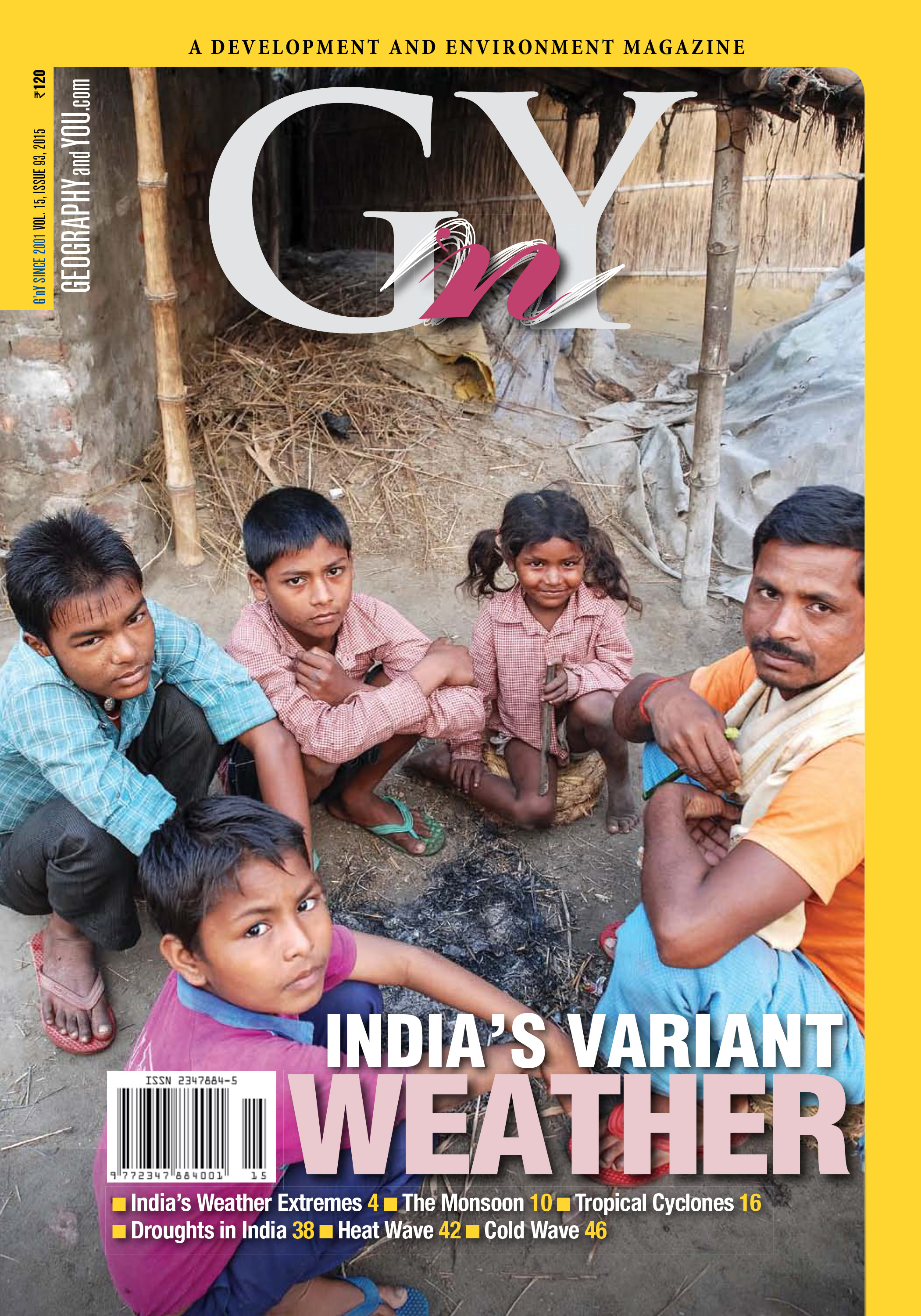
Expert Panel

Vice Chancellor, MG Kashi Vidyapeeth, Varanasi

Chairperson, National Biodiversity Authority, Chennai

Air Vice Marshal (Retd) Former DG, IMD, New Delhi

Former Member Secretary, Central Pollution Control Board, New Delhi

Former Director, NCAOR, Goa

Professor, CSRD, Jawaharlal Nehru University, New Delhi

Professor, CSRD, Jawaharlal Nehru University, New Delhi

Director, Economic Research, Nielsen, New Delhi
Inside this issue
India's Variant Weather
Being a land with a unique climatic regime, including two monsoon seasons, two cyclone seasons, hot and cold weather seasons, cold waves and fog, India is vulnerable to several extreme weather events. A spatio-temporal analysis of these weather extremes is extremely essential to help understand India’s vulnerability potential, and hence minimise the adverse impacts on the population.
The term monsoon is customarily used in the South Asian context to refer to a period of widespread rains during June-September, otherwise known as the ‘Indian summer monsoon’. The common reference to a ‘good’ or ‘bad’ monsoon denotes whether the rainfall is in excess or deficient over a large area like India. While the monsoon has a wider economic and socio cultural importance for South Asia, its origins have been subject to much scientific debate.
A tropical cyclone is an intense low pressure system that is classified on the basis of its wind speed. The phenomena has a definitive structure and a well-defined life cycle.
Tamil Nadu experienced unprecedented floods in November-December 2015, with Chennai bearing the brunt of non-stop rains and inundation paralysing normal life. High sea surface temperatures over the Bay of Bengal, a stationary pressure trough and easterly waves caused this phenomenon.
Floods refer to the overflowing of a river or water body beyond its normal confines. They may take the shape of flash floods, surface floods, rapid onset or slow onset floods, depending on the manner of their occurrence.
The Chennai floods in November-December 2015 are a wake-up call for us all. It is high time we stopped all unregulated unauthorised illegal encroachments and constructions over natural watercourses, creeks, estuaries, ponds, lakes and marshlands in our greed to over-exploit our natural resources under the ruse of development.
Drought is a deficiency in precipitation for a season or more, resulting in water shortage. Droughts may be meteorological, agricultural or hydrological. Depletion of tree cover can combine with scanty rains to increase the magnitude of a drought.
In the last few decades, there has been an increasing incidence of high-humidity heat waves. Human-induced climate change has been proved to be the major factor behind the increased frequency and severity of heat waves all over the world.
As India braces itself for another cold wave this winter, its dynamics are explored in a brief treatise. The cloudiness, fog, precipitation and more are decoded for quick understanding and greater preparedness.
A hailstorm is a thunderstorm that produces ice as precipitation. Hailstorms can cause serious damage to crops and property. In India, hailstorms mostly affect the northeast and western Himalayas, with the maximum strikes in March and April.
Madhavan Nair Rajeevan, the Secretary, Ministry of Earth Sciences, spoke with Sulagna Chattopadhay from within the precincts of his new office, providing an excellent overview of a possible link between increased extreme events and climate change.
Mawsynram, has currently overtaken Cherrapunji as the wettest place on earth. But both these places in Meghalaya’s East Khasi hills share a common orography, although facing different valleys.
Thunderstorms are localised phenomena that can cause substantial damage. These are classified into the ordinary or single-cell, long-lasting multiple-cell or violent super-cell ones. In India, the pre-monsoon season is when most thunderstorms occur.
India's Outdoors
The Chambal National Park is a rare, unspoilt place off the tourist circuit where you can enjoy the sight of the Indian gharial, and flocks of Indian skimmer in their natural habitat.
In brief
In the current decade, substantial change in the frequency and intensity of extreme events may be seen, with heat waves, floods, cyclones and more occurring in a grim cycle of climate related disasters. The pattern of precipitation too has changed, with fewer light and moderate rains being replaced
Extreme weather events causing natural disasters in the current decade are occurring nearly five times as often as they were in the 1970s. The frequency of geophysical disasters—earthquakes, tsunamis, volcanic eruptions and mass movements, remained broadly constant throughout this period, but a su
